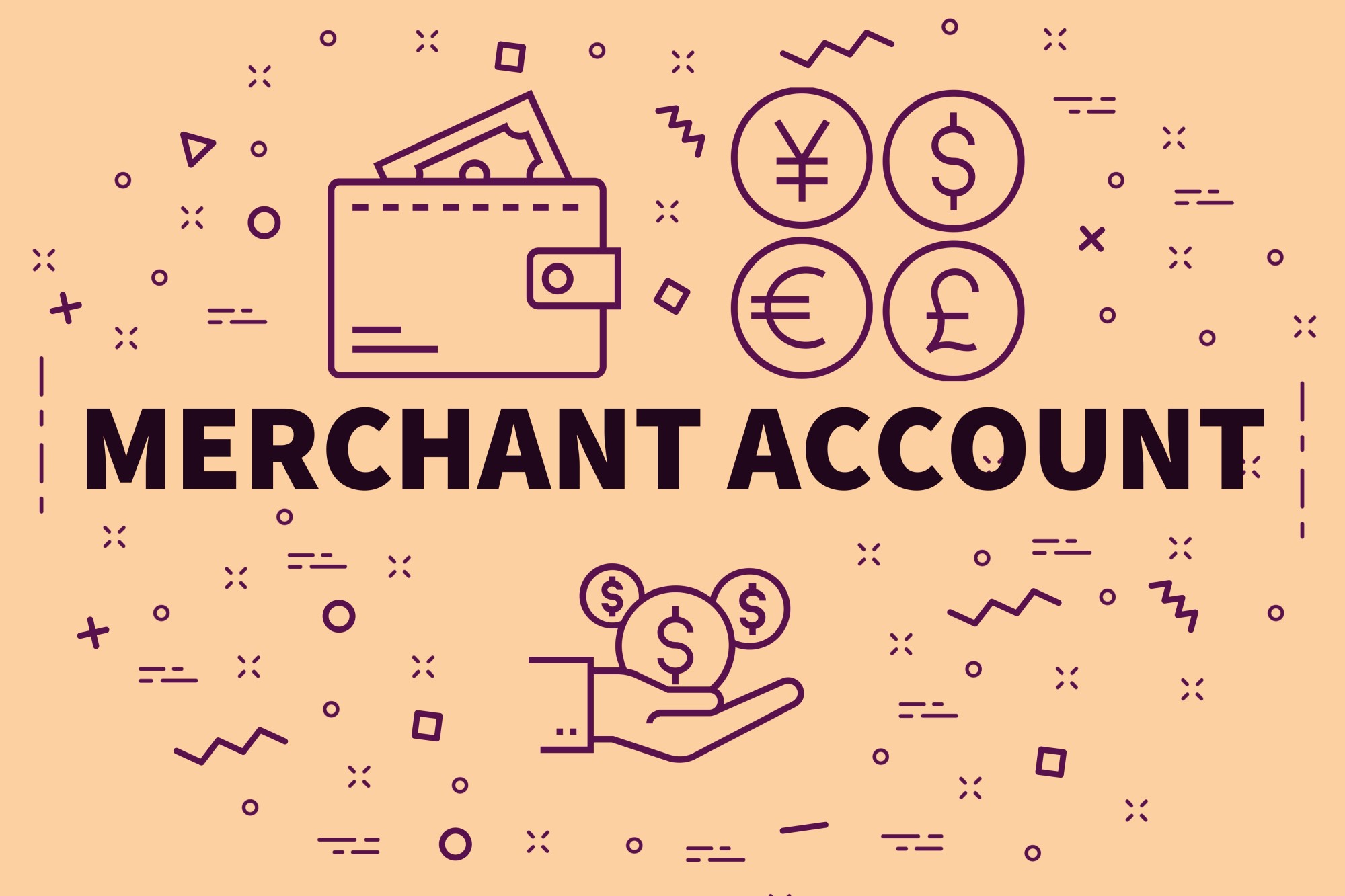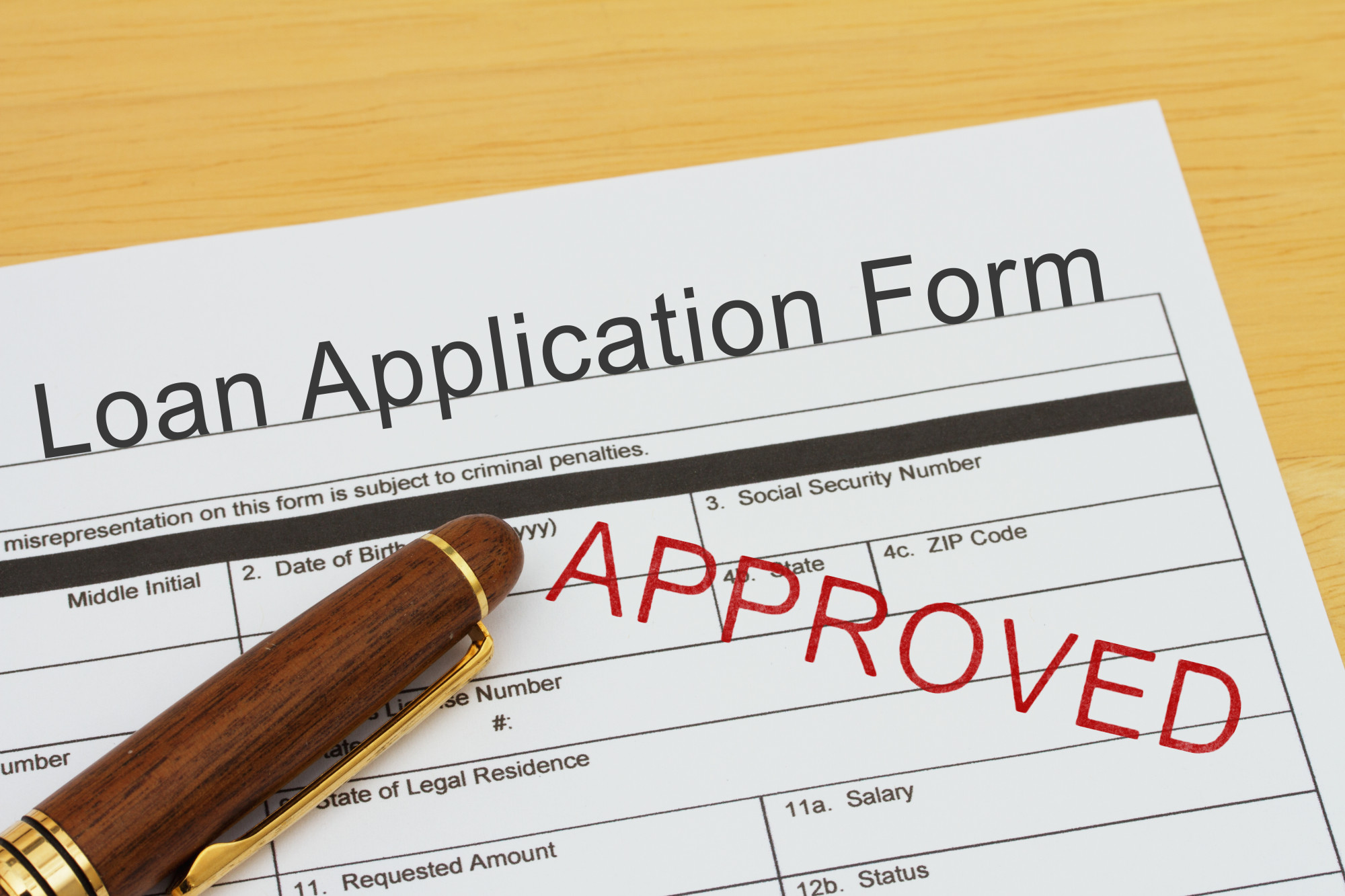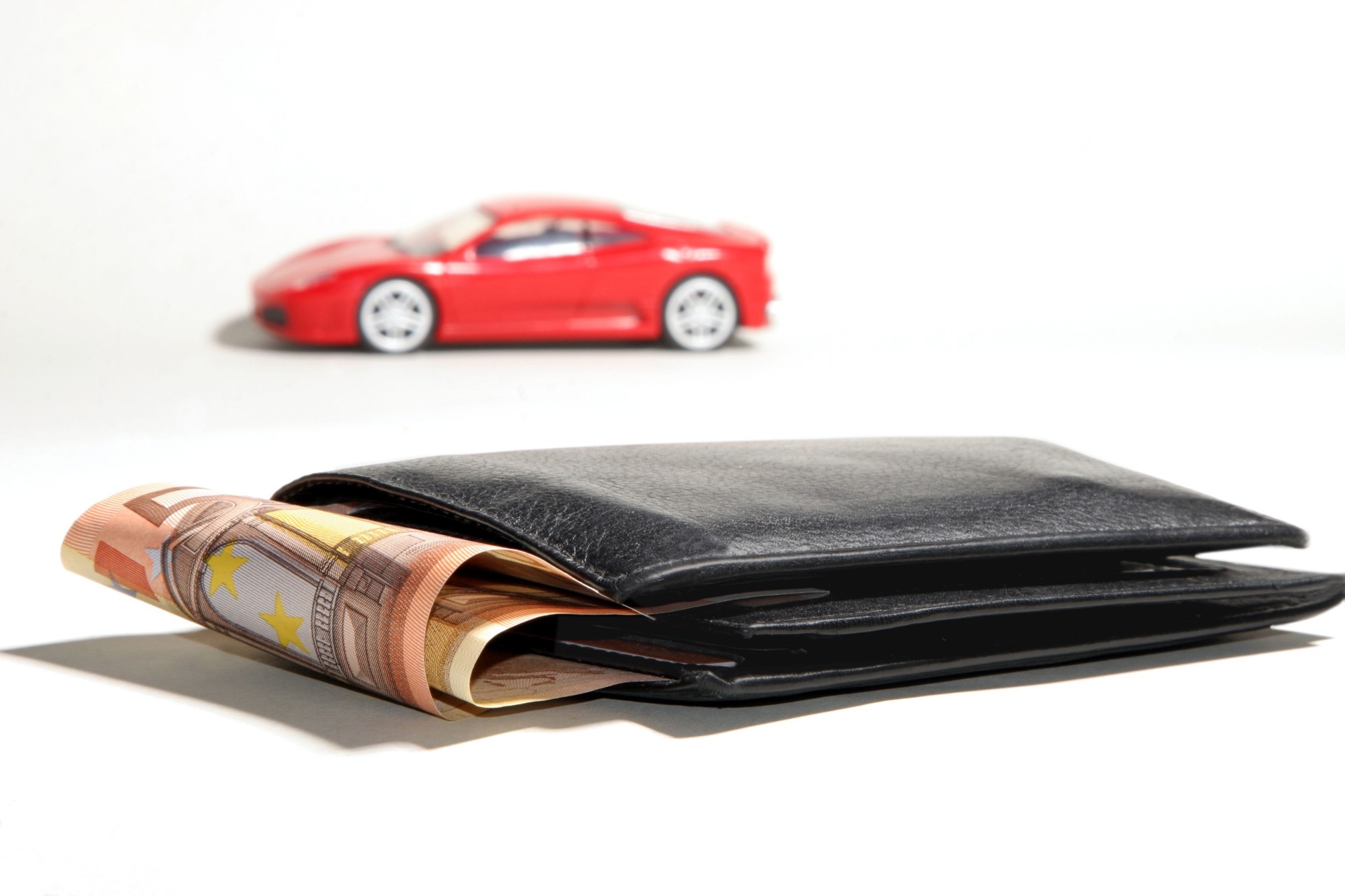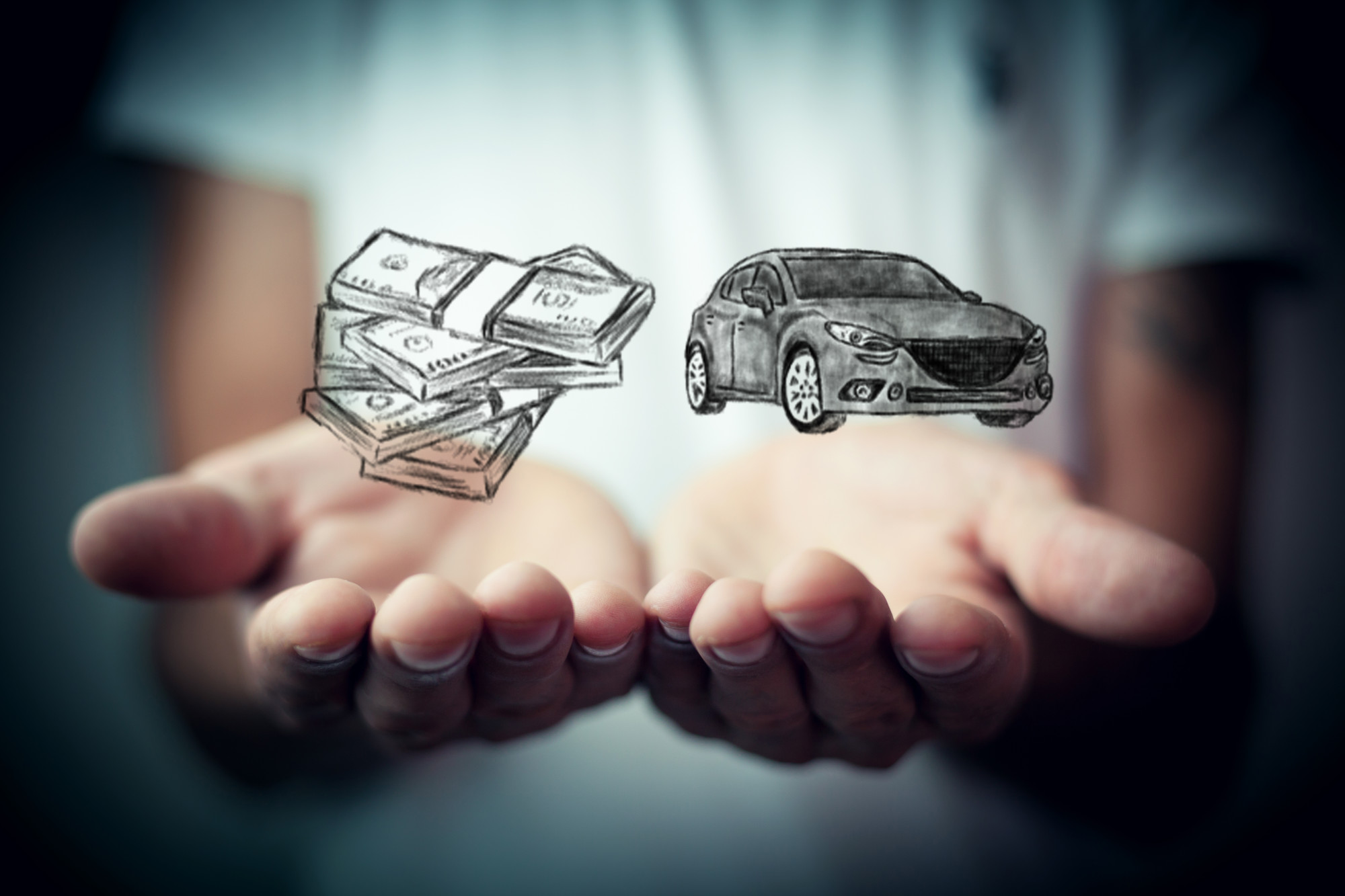Probably the most iconic image that the world has of Los Angeles, the Stahl House was made famous by the Case Study House Program and the photography of Julius Shulman. Come join me for a twilight visit to the home designed by architect Pierre Koenig, where we will enjoy a private docent-led tour highlighting its history and place within Modernist architecture.
7 Things You Should Know About Having a High Risk Merchant Account
7 Things You Should Know About Having a High Risk Merchant Account

Having a high risk merchant account is a necessity for some businesses. Learn more about this type of account with these seven facts.
If you have an online business, accepting credit cards as a form of payment is absolutely critical to your success and your bottom line.
But if your business is considered high risk, finding the right match can be a daunting task.
So, what do you need to know about having a high risk merchant account before you begin looking for the right company to serve your needs? Here are nine things you should be aware of before you make a commitment.
1. Determine if Your Business is Considered High Risk
Before you select a merchant processor, you need to know if your business is even considered to be high risk. The criteria can vary widely between providers, but one of the first things they look at is if your industry typically has a high rate of fraud or chargebacks.
If you’re not operating from the United States, this is another potential indicator of high risk. Certain categories like firearms, drug paraphernalia, or even auction sites may also be considered high risk. Find out if you fall into this category first so you can be prepared for the next steps.
2. Prepare for Higher Fees and Longer Contract Terms
If you have a high risk merchant account, you can expect to pay more in processing charges and billed account fees. The reason is that your processor is taking you on as a risk, so they’re passing the cost of that risk on to you.
You’ll also likely have to keep your contract with the processor longer than you would if you were not a high-risk client. On average, high-risk accounts must stay with the same processor for three years or even longer.
An auto renewal clause is usually included which can force you to remain an ongoing customer for periods of a one-year minimum after each renewal. If you want to cancel, you’ll likely get hit with an early termination fee.
3. Check Available Plans for Your High Risk Merchant Account
Merchant processing plans can vary, so shop around until you find one that offers terms you can live with. Traditionally, these fees are charged on something called an interchange-plus pricing plan, although your rates will be higher than a low or no-risk account.
Find out if you can get a flat-rate pricing plan which will make billing a lot easier. If you discover that a merchant processor is charging extremely high per-transaction charges, you may want to steer clear. Compare rates and plans until you find one that’s within a reasonable amount.
4. Be Aware of Rolling Reserves
The term rolling reserves refers to money that is set aside from the proceeds of your sales in order to cover certain expenses. These reserves will help pay for things like chargebacks, and they’re put in place to protect the merchant processor.
Since many high-risk accounts tend to go out business, these reserves are there to cover any unexpected costs to the merchant processing company. If you’re new in business, you can almost guarantee that this is a requirement. However, as time goes on, the rolling reserves should decrease as long as your account remains in good standing.
5. Read the Fine Print
Any reputable merchant processor will give you a contract that spells out all of your fees and terms. Make sure you read this thoroughly before you make a commitment.
Look closely for different clauses that could cause you to pay even more than you expected. Some companies claim to specialize in high-risk accounts so they feel that they can charge their merchant accounts exorbitant fees. Do your homework and never sign anything until you’re completely comfortable with the terms and the cost.
If you’re ever in doubt about a potential merchant processor, ask your fellow business owners who they recommend. You can also read reviews online to find out which ones most high-risk customers are happy with, and which ones to avoid.
6. Security Measures will be Added
A quality payment processor will add some layers of additional security to your account. This can actually benefit you since it will help prevent fraudulent transactions and dishonest chargeback claims.
Requiring things like CVV2 verification is a good thing since it protects you and your processor from fraud. Ask your provider about what kinds of security measures they take to protect themselves and your business from unscrupulous transactions.
7. Develop a Good Track Record
If you really want to lower the costs associated with a high risk merchant account, work diligently to prove your salt. This could mean anything from reducing or completely eliminating chargebacks to consistently showing a profit for a long period of time.
The longer your business does well and maintains its reputation, the better off you’ll be in the eyes of the merchant processor. Some providers may even reward their high-risk accounts with lower rolling reserves over time or even reducing fees as time goes on.
Ask several potential merchant processors what kind of benefits they offer high-risk accounts if they do well. You might be surprised at the progress and positive benefits you can reap once the business is more established.
Success is Possible
Even if you operate a high-risk business, there’s no need to despair. With a few helpful bits of information and a little research, you can find a quality high risk merchant account that will serve your needs well.
Visit our website for more information about: High Risk Merchant Services.
Casino magnate’s Lake Tahoe midcentury asks $25.75M
5 Reasons to Take a No Credit Auto Loan with First Financial
5 Reasons to Take a No Credit Auto Loan with First Financial

Did you know First Financial can offer you no credit auto loan options? Learn all about them in this detailed article.
According to reports by the Federal Reserve Bank of New York, 107 million Americans have auto loan debts. This data shows more Americans have car loans than mortgages.
Borrowers able to get auto financing at reasonable rates access larger and amounts than before. This sounds appealing to individuals with a solid credit history, but what if you are just starting off in the world of credit and have no history at all? The good news is that even with poor credit you can still get car financing by opting for a No Credit Auto Loan with First Financial.
But how can this happen? Read on to find out.
5 Reasons to Take a No Credit Auto Loan with First Financial
First, you need to understand the meaning of a No Credit Auto Loan. As the name suggests, this is a car loan extended to an individual with either no credit history, poor credit or limited history. Therefore, you can get an auto loan even without having a credit history, or with a bad credit history.
Below are the reasons why you need to take a No Credit Auto Loan with First Financial.
1. Fast Approvals on All Subprime Cases
Can you get a car loan with bad credit? This is a question asked by many people and you might be surprised to find out that of nearly 50% of American borrowers have a tarnished or limited credit history.
In other words, their credit scores lie in the subprime category, which means they have limited options for accessing loans. This category of people will find First Financial their best option since they can place their application regardless of their situation, whether its bankruptcy, poor credit, or no credit.
If you want to make a major purchase like a car or a truck and your credit history is not appealing, then this is the best website to turn to. You will be able to access the loan in the convenience of your laptop at the lowest possible rates you can ever imagine. The process is easy and confidential and you are sure to get a quick email response to update you on the progress of your application
2. Able to Manage Your Loan in the Comfort of Your Laptop
First Financial is an online lender which means it is accessible 24/7 anytime, anywhere. Some of the conveniences you are certain to enjoy:
- Deposit payments using your laptop or handset.
- Read your statement anytime on your devices.
- Update your account profile which includes changing your logins for better security.
- Compare interest rates of different dealers in the site.
First Financial believes that obtaining a No Credit Auto Loan should be hassle-free because this is a long-term financial decision you are making. You should not be under duress by auto-dealers whose main concern is the interest they get for every client they bring on board.
Working on your car loan from home will give you the freedom to check on different prices and options available so that you are sure to make an informed decision.
3. Reasonable Qualifications for Auto Financing
The requirements of getting an auto loan without credit on this website are so easy you may think it’s too good to be true. While the requirements are stringent enough to avoid liability to the borrower, they are also “loose” to ensure that most of the applicants get approved. The following are the only qualifications for auto financing:
- Applicant should be a U.S. or Canadian resident of legal age-18 years and above.
- Gross monthly income of $1,500 if the credit score is less than 625.
- If the applicant has filed for chapter 7 bankruptcy, he/she should have completed the “341 Meeting of Creditors.”
- If the applicant has filed for chapter 13 bankruptcy, he should show an “Authorization to Incur Debts” from the trustee.
- Commitment to buy a car from their various approved car dealer partners.
Even if you have been declared bankrupt, you have a reason to smile because First Financial will sort you out. Such financial hurdles will no longer deter you from obtaining a loan for your vehicle or truck.
4. Special Package for Military Personnel
Members of the armed forces both on active duty or retired and struggling with bad credit may wonder how they may qualify for a car loan. First Financial has tailored made auto financing programs that helps them to obtain auto loans in spite of their poor credit scores.
First Financial understand the difficulties encountered by these military men and women in their effort to maintain safety and that is why they have specialized programs dedicated to them. Military auto loans are different from normal civilian loans because they are often offered on lower interest rates, require lower down payments and come with special discounts.
The rate of approval is high mainly because of the stability of their income. Military workers should not put off buying a car because of the demand of their duties but should embrace this enticing opportunity
5. Having Access to a Wide Range of Dealers
As mentioned earlier, First Financial is an online provider of bad credit car loan that partners with hundreds of authorized and licensed car dealers. This site will allow you to shop for dealers while comparing prices and interest rates.
To crown it all, you will be able to get several preapprovals using only one application. So don’t allow yourself to be limited by the car dealers or the financial institutions in your area, browse through our website for an array of choices.
Get a No Credit Auto Loan with First Financial
It may seem daunting at first but it is not impossible. A few tips will help you navigate the murky waters of credit even with no credit history to back you up.
Engaging a co-signer with an excellent credit history in your auto loan will increase your chances of approval. Also, a reasonable down payment will show the potential buyer that you are serious about buying a car despite your bad credit history and may serve to reduce the total cost of your loan. Finally, shop around to explore the options available in the market and compare various interest rates and the payment plans that suit your budget.
Remember, First Financial will offer you the best financial support irrespective of your credit history. Apply for your No Credit Auto Loan today in less than three minutes.
Articles:
How to Start a Small Business in the U.S. as a Non-Citizen
https://www.remitfinder.com/blog/how-to-start-a-small-business-in-the-us-as-a-non-citizen
What Is a Cash Advance and When Should I Use One?
What Is a Cash Advance and When Should I Use One?
https://www.firstfinancial.com/cash-advance/

A cash advance lets you use your credit card to get a short-term cash loan. Learn all about cash advances and when to use them in this guid
43 million Americans have bad credit, with the bulk of these being young consumers.
While student loans and tough economic times can be blamed for this, poor planning and a low comprehension of credit facilities are partly to blame as well.
Cash advance loans are very convenient and can be hard to resist, but they can also put you in trouble.
How do these loans work, and how can you ensure to get the most out of them?
Here is an in-depth cash advance guide.
What is a Cash Advance?
Your credit card lets you use your credit card to get a short term loan at an ATM or a bank. This is then paid back in the same way you pay for anything you put on your credit card.
In a way, this is like using your credit card to ‘purchase’ hard cash, which you then use to buy goods and services. In this way, you get to borrow cash against your credit card limit.
The same way you use your debit card to get cash from an ATM, you get cash from a credit card to be repaid with interest.
The difference between a credit card advance and a payday advance loan is that the latter is not dependent on your credit card.
When to Get Cash Advance
If you typically do not carry paper money for your day to day spending, you might run into trouble when you need to pay for something at a business that only accepts cash payments.
In such cases, being allowed to convert your credit card limit into cash becomes very convenient.
Advance Limits
Most credit card companies allow their clients to convert a percentage of their credit limit into cash, as opposed to the entire amount.
For most people, this translates into a couple of hundred dollars. This is therefore useful for smaller emergencies purchases and should not be dependent on for larger purchases.
Interest on Cash Advances
While getting a credit card advance is easy, the interest rates can be a bit high.
Here are some of the associated costs that make it so:
ATM or Bank Fees
These are determined by the financial institution that processes a transaction. This can be a bank or an ATM where you get your cash advance from.
If you use a bank outside your card issuer’s network, expect the fees to be higher.
Cash Advance Fees
These are determined by the company that issues your credit card.
These are charged in three different ways.
The first is by charging a percentage of the amount advanced. This can be as high as 5%.
The second way is by charging a flat fee per cash advance. For example, you can be charged $5 to $10 per advance, irrespective of the amount.
The third one is by charging the higher figure between the percentage or the minimum amount. An example of this is $5 or 10% of the withdrawal amount; whichever amount is higher.
Interest
To begin with, the interest charged on credit card loans is always higher than that charged on a credit card purchase.
Secondly, while you get a grace period with credit cash purchases, interest on cash advances starts accruing immediately.
Credit Card Advance Tips
It might be impossible to avoid this loan facility altogether.
For this reason, it’s key to know how to keep the costs low and avoid getting into unmanageable debt.
Here are a few tips.
1. Know Your Limit
The amount available for you to convert to cash is lower than your credit card limit. Exceeding this amount can result in higher interest rates and other over-limit charges.
Ensure to find out your card limit when you get a new card so you can adhere to a safe limit.
2. Understand your agreement
The key information to look out for is the one-off payable cash advance fee and the applicable APR as well.
If you are unclear on any terms of your contract, ensure to engage your service provider’s customer care representative.
3. Use It for Emergencies Only
Limit the use of this facility to emergencies you cannot use your credit cards on. It’s also important to create an emergency fund to draw from when needed.
If used without caution, credit card advances can spiral out of control making it difficult for you to make timely repayments. Consequently, this has the potential to lower your credit score.
4. Limit the Amounts
Aside from only using this facility as a last result, limit your withdrawals to only what you need.
Resist the temptation to take out more because the higher you take, the higher the interest you will pay.
While this might seem like much, these amounts add up to a significant figure over time.
Credit Card Advance and Credit Score
Taking out this facility does not directly impact your credit score, but it might have some indirect consequences.
The first one is that it raises your credit utilization ratio. This is among the benchmarks used to calculate your credit scoring. A high utilization ratio positions you as a high-risk borrower and may lower your scoring.
The other one is tied in with the costs of repaying a credit card advance. If you are not able to afford the high-interest rate, you may resort to late payments or even default.
When this information makes its way into the credit bureaus, it can negatively affect your scoring as well. As a rule of thumb, avoid making payments 30 days past the due date. Timely payment could help improve your credit score.
Ensure you understand all processing costs, the applicable APR and your ability to repay before taking out the loan.
The Bottom Line
Infrequent use of cash advance loans will not dent your financial health.
The goal is to use them sparingly, only take out what you need and make payments in a timely manner to avoid further costs.
At First Financial, we understand the value of a financing partner and strive to provide solutions at your point of need.
Are you facing a cash emergency? Contact us today and we will help you find a solution together.
Personal Loan Vs Car Loan: Whats The Difference?
Personal Loan Vs Car Loan: Whats The Difference?
Personal Loan Vs Car Loan: Whats The Difference?

It’s important for an individual to distinguish between a personal loan and a car loan. We share how to tell the difference between a personal loan vs car loan.
An average new car in America will set you back $32,000. This amount is too steep for many to pay for in cash.
For most people, taking a car or a personal loan is the most viable option but which should you go for between the two?
To answer that question, it’s important to understand what each of these options entail. In this article, we shall make an analysis of personal loan vs. car loan to help you make the right choice.
Personal Loans
A personal loan is an unsecured facility that provides the borrower with funds from the lending institution. The institution is most often a bank.
The funds are advanced in a lump sum, and the borrower can channel their loan funds towards any venture they see fit. These loans typically range from $1,000 to $ 50,000.
A personal loan can also be secured, meaning you attach an asset of value to your loan. On default or inability to repay your loan, the lending institution can seize the property to recoup their funds.
However, most borrowers opt for the unsecured loan.
Interest Rate
Because of the risk involved, unsecured loans attract higher interest rates than secured ones.
Their requirements are also more stringent, with the borrower’s ability to repay and previous credit history being scrutinized.
It does not end there, the amount you qualify for, and the interest rate at which a lender advances your loan are both dependent on your credit rating.
Even though there are things you can do to improve your credit rating, you will have to contend with high interest rates if your rating is less than stellar.
Loan Term
Personal loans have a repayment period attached. The longer the repayment period, the higher the interest you will pay by the time the loan comes to term.
The reverse is also true; you pay less interest with shorter loan terms. However, you should go for these only when you are absolutely confident that you can comfortably pay the higher amounts.
Car Loan
These loans are considered a secured loan.
The security, in this case, is the car you intend to buy. If you default on your payments, the dealer repossesses the vehicle to recoup his money.
The borrower makes fixed payments over the duration of the loan. As the borrower, you take physical ownership of the vehicle, but the financier owns the asset until you make your final payment.
Interest Rate
Because the car you buy is also collateral for your loan, a car loan is deemed to be low-risk financing.
It, therefore, attracts lower interest as compared to a personal unsecured loan.
The interest rate is also fixed from the onset, cushioning borrowers from increases experienced with personal loans.
Loan Term
Most car repayment terms are under 36, 48, or 60 months. Again, the monthly payments are higher for shorter repayment terms and lower with longer repayment terms.
Conversely, the interest paid is higher for more extended repayment periods than for shorter ones.
Unlike a personal loan where your credit history features prominently, your credit rating does not significantly affect your car loan application.
Similarly, an unfavorable credit rating does not significantly impact your borrowing amount nor interest rate.
This means you can still go for a pricey car with a poor credit rating.
Personal Loan vs. Car Loan: Pros and Cons at a Glance
As already discussed, these loans have their similarities and differences. They also have their advantages and disadvantages.
Personal Loan
The merits or personal loans are two-fold.
The first is that you can use your personal loan for a car, or channel it to other uses, partially or wholly. As such, a personal loan also offers more flexibility in repayments.
Personal loans do have a downside, however.
Due to their unsecured nature, personal loans employ stricter eligibility criteria and requirements. Upon qualification, you also pay higher interest rates.
Personal loans also lock out people with poor credit scores.
Car Loan
Car loan applicants enjoy lower interest rates, with faster approval processes. If you need a car and have a poor credit history, a car loan might be the only financing option available to you.
This notwithstanding, you need to put up a deposit to get a car loan. The amount will be dictated by the total cost of the car. This can be limiting.
In addition to this, you do not fully own the car until you have made your last payment.
Tips for Shopping for Financing for a Car
Whether you go for a personal or a car loan, there are tips to help you find a good financing option.
1. Determine How Much You Can Spend
Determine how much you can afford to spend. A rule of thumb is that you should be able to repay the loan within three years.
This cuts down the amount of interest and prevents you from paying more than the real value of the car.
2. Make Loan Comparisons
Contact your local banks and credit unions to see if you can be pre-approved for a loan, and what the interest rates are.
Compare bank rates with dealership rates, and do your research on any discounts that can be offered to you.
Find out if setting up automatic loan repayments or switching banks will lower your interest rate as well.
All this information will point you towards the most affordable option.
3. Have Your Financial Information Ready
The pre-approval process may include producing proof of income documents.
Be ready with this information, as well as any other financial information that can help your loan be approved and disbursed faster.
4. Start Shopping Around
When you reach advanced stages of loan approval, you can get to the fun part, which is shopping for and test driving different cars.
A personal loan offers more leverage in terms of bargaining power on your car of choice.
Do not shy away from negotiating with a dealer either. Shop around and find out the going rate for the car you want.
If you have an older car, it might seem easier to trade it in. While this is one way to go about it, selling your old car independently will give you a better return than trading it in.
Which Should You Go For?
The key take away on the personal loan vs. car loan question is to understand the differences and measure either type of loan against your circumstances to find the best fit.
First Financial is a leading financial solution provider to people with a poor credit score. Contact us today if you are in need of a personal or a car loan.
An In-Depth Guide on How to Take out a Loan for a Car
An In-Depth Guide on How to Take out a Loan for a Car
An In-Depth Guide on How to Take out a Loan for a Car

Taking out a loan can be beneficial in many ways. We share our in-depth guide on how to take out a loan for a car and the benefits it has.
Did you know that 107 million people have taken out an auto loan to help pay for their car or truck in America?
Purchasing a car can be a costly expenditure. Most people don’t have the cash on hand to pay off the debt of a car immediately, which is where auto loans and personal loans come in handy.
Discover our guide on how to take out a loan for a car and familiarize yourself with the process of buying a car.
What Are the Different Types of Loans Available?
If you have never dealt with loans and credit scores, it can be a very difficult thing to navigate and understand.
There are many different types of loans available. Some of which are great for buying a car, and some that aren’t as good for this type of purchase.
For example, the best types of loans are auto loans, bank loans for a car, or alternatively, you can use a personal loan to buy a car.
Personal loans for car purchases sometimes have costly interest rates, so some people prefer not to use personal loans when they are purchasing their car.
Research has found that car loans are typically cheaper because they are secured by an asset (i.e. the car, which the lender can repossess to cover the costs if you can’t pay your loan).
Federal Reserve found that in May 2018, a 24-month personal loan from a commercial bank had an interest rate of 10.31%, whilst a 48-month new car loan from a commercial bank had an interest rate of 5.05%.
How to Take out a Loan for a Car
Unlike buying a car outright with cash in hand, like you might have done for your very first car, taking out a loan for a car needs to be thought through.
These are the key things you need to do when you want to take out a loan for a car.
Calculate Your Budget
The very first thing you need to do when you want to take out a loan for buying a car is to work out your budget. Calculate how much you can comfortably pay off each month.
According to the Federal Reserve Bank of New York, a record of 7 million Americans are at least three months behind on their car loan payments. It is critical that you work out how much money you have coming in each month, and how much you can pay off.
The best way to work out what you will actually be paying for your car is by calculating how much you will be paying each month and for how many months. This calculation needs to include interest rates, too.
Check Your Credit Score
Whether you want a personal loan for a car or an auto loan for a car, you need to check your credit score and history.
Poor credit history might mean that you pay higher interest rates than if you have a good credit history. If this is the case, you might want to hold off getting a loan and focus on improving your credit score.
If you have a good credit score, you might be able to negotiate a better deal with your loan lender.
Find out how you can secure an auto loan without having previous credit experience or a credit score.
Research Your Options
Once you have an idea of how much you have to spend and what your credit score is, you can research your options. There are a number of loan lenders available, however, not all of them will be right for you.
You can get car loans from banks or credit unions, dealerships, or online lenders. Compare the different types of deals and payment plans each of them offer and work out which one is best for you.
Car loans typically come with 3-, 4-, 5-, or 6-year terms. The longer the payment plan, the more interest you’ll end up paying, so make sure you work out which plan is the most cost effective for you.
Get Pre-Approved for a Loan
Once the lender has given you a quote for the loan, you will be pre-approved, which doesn’t mean that it’s guaranteed. Once you have been pre-approved, you the lender will then check your credit.
Once you are pre-approved for a loan, the lender will give you a letter that you can take when you go car shopping. This letter can help you see if you can get a better deal from the car dealership.
Even though you have been pre-approved, it doesn’t mean that you need to sign up for the loan. It is still your choice whether you pursue this loan or you can choose another one.
You also can adjust the terms of your loan, for example, if you find a cheaper car and don’t need an as bigger loan, you can apply for a smaller loan instead.
Find Your Car
The final step is the most enjoyable one. Once you know how much you can afford each month, and you know what kind of loans you can get, you can go car shopping.
Make sure you do your research and find a car that is the right price and has the right features that you need.
Car Loans
Applying for a car loan doesn’t have to be complicated or confusing. Just follow our guide on how to take out a loan for a car and you’ll soon be driving away with a new vehicle.
Apply for one of our auto loans now and see how we can help you.
Alternatively, if you need help with your loan process, get in touch with our team and discuss your loan requirements.
